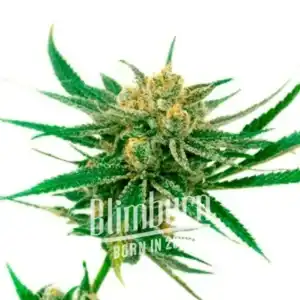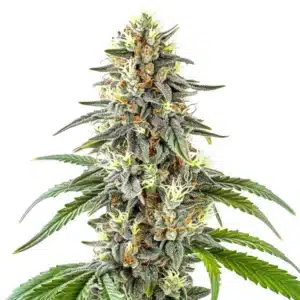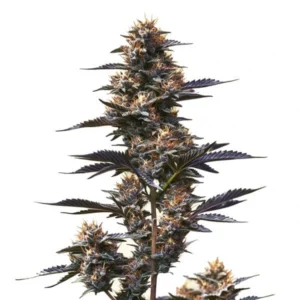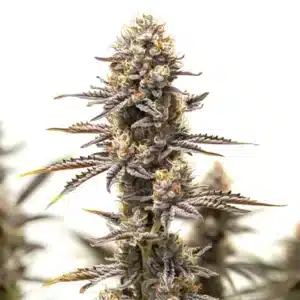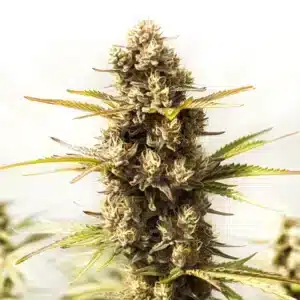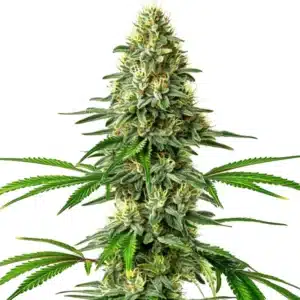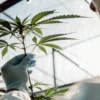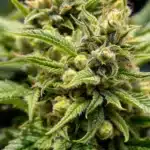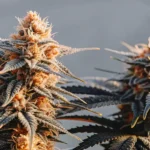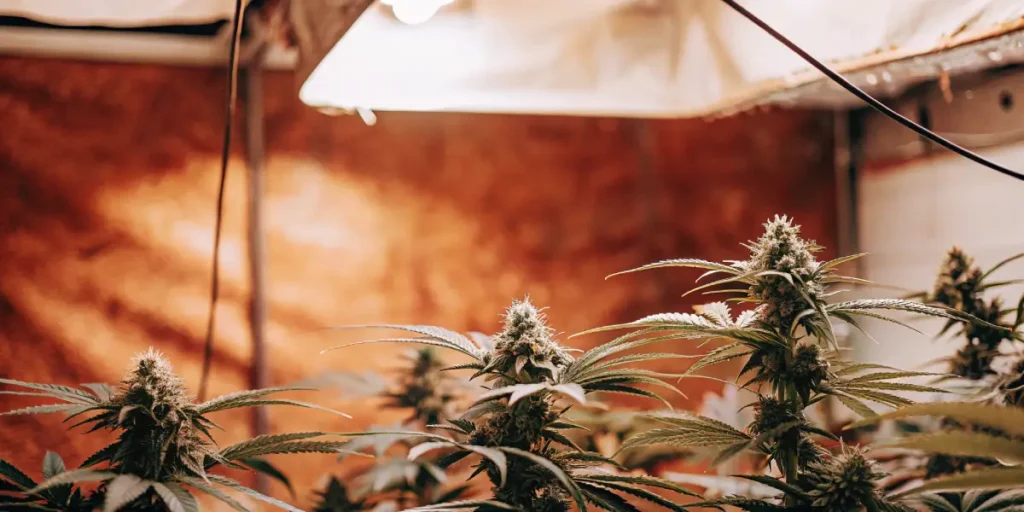
How to Spot Early Signs of a Hermie Plant and Save Your Crop
Cannabis growers, especially beginners, fear one thing above all else: hermaphroditic plants, commonly called “hermies.” Hermies can ruin a crop if left unchecked, turning your hard work into a seed-filled disappointment. If you’ve ever wondered how to identify early signs of a hermie plant, you’re in the right place. This article will walk you through everything you need to know to spot, manage, and prevent hermaphroditism in your cannabis plants.
Why Identifying Early Signs of a Hermie Plant Is Critical
Imagine investing months into nurturing your cannabis plants, only to find seeds instead of rich, resinous buds. Hermie plants can pollinate your entire grow, significantly reducing the quality and potency of your harvest. Spotting the problem early can save your crop and your time. Knowing how to detect and respond to hermie plants early can mean the difference between a successful grow and a ruined harvest.
Recommended Strains
White Amnesia
|
|
THC | 18% - 22% (Medium) |
|
|
Type | Feminized |
|
|
Yield | High |
|
|
Phenotype | 30% Indica / 70% Sativa |
White Fire OG
|
|
THC | 24% - 28% (High) |
|
|
Type | Feminized |
|
|
Yield | High |
|
|
Phenotype | 50% Indica / 50% Sativa |
When a hermie plant begins to form male flowers, it can release pollen and compromise the quality of your entire yield. This can be particularly devastating if you are growing for medical use or aiming for maximum potency. By learning the telltale signs and addressing them immediately, you can protect your plants and ensure the highest quality buds.
Promos & Deals
What Are Hermaphroditic Plants?
Hermaphroditic plants, or “hermies,” have both male and female reproductive organs. This means they can self-pollinate or pollinate other plants nearby. While this might seem like a natural failsafe for the plant, it’s a grower’s worst enemy.
Hermaphroditism in cannabis is a survival mechanism. When plants experience stress or environmental triggers, they may develop male flowers alongside female flowers to ensure reproduction. However, for growers, this poses a significant problem. Seeds in your buds reduce their quality, weight, and potency. Knowing how to recognize and prevent hermaphroditism can save you months of effort.
How Does Hermaphroditism Occur?
Hermaphroditism in cannabis usually results from stress. Factors such as poor lighting, nutrient imbalances, temperature fluctuations, or physical damage can trigger a plant to develop male flowers alongside female buds. Stress is the number one enemy of cannabis plants and one of the primary causes of hermaphroditism. Identifying and eliminating sources of stress is crucial to preventing hermie plants.
Common stress triggers include:
Light Leaks: Even minor interruptions in the dark cycle can stress plants and lead to hermaphroditism. Cannabis plants rely on consistent light and dark periods to maintain their hormonal balance. If you have light leaks in your grow area, your plants may react by developing male flowers.
Temperature Extremes: Cannabis plants thrive in specific temperature ranges. If the grow environment becomes too hot or too cold, plants can become stressed. Fluctuating temperatures during the day and night can also contribute to hermie development.
Over-Pruning: While pruning can improve airflow and light penetration, excessive pruning can shock the plant. If you remove too much foliage, especially during flowering, the plant may interpret this as a threat and develop male flowers as a survival response.
Physical Damage: Accidental breakage of stems or branches can stress a plant. Similarly, pests or diseases that harm the plant’s tissues can trigger hermaphroditism.
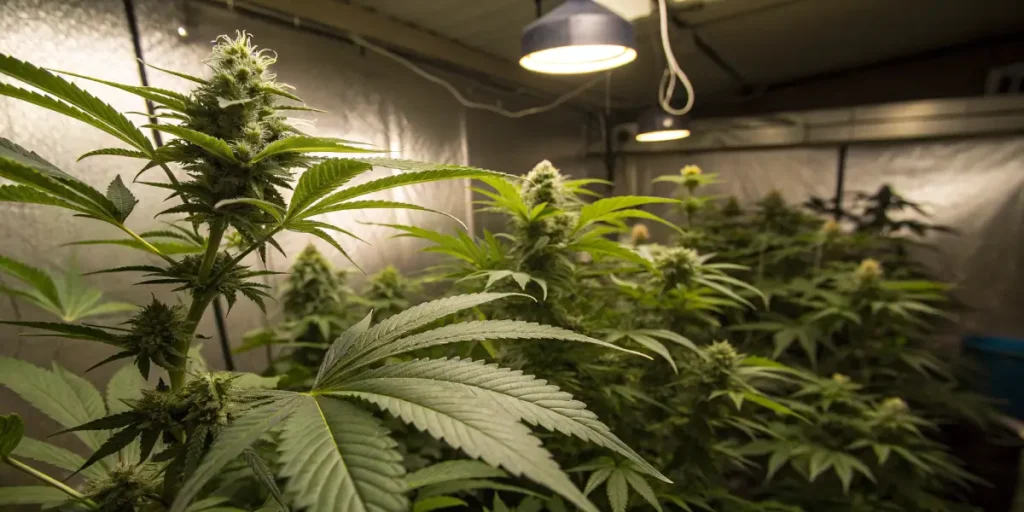
Early Signs of a Hermie Plant
To protect your harvest, it’s essential to know what to look for. Below are the primary early signs of a hermie plant. Recognizing these signs as early as possible can help you take quick action and save your crop.
Early Signs Of Hermie Plant – Formation of Pollen Sacs
The most recognizable early sign of a hermie is the appearance of pollen sacs. These small, oval-shaped structures often grow at the junction where branches meet the stem. Unlike female calyxes, pollen sacs are smooth and lack pistils (the small, hair-like structures). These sacs can develop quickly and, if left unchecked, can release pollen into the air, leading to widespread pollination.
Early Signs Of Hermie Plant – Mixed Bud Development
In some cases, hermies develop both male and female flowers within the same bud. Look closely for tiny yellow or green banana-shaped structures, commonly called “bananas” or “nanners.” These are male stamens that can release pollen. The presence of these structures in your buds is a clear indication of hermaphroditism.
Early Signs Of Hermie Plant – Irregular Flower Growth
Early buds on a hermie plant might look unusual. If you see clusters that don’t resemble typical female flowers, it’s time to investigate further. Hermie plants often display inconsistent flower growth, with malformed or uneven buds being a warning sign.
Early Signs Of Hermie Plant – Pistil Discoloration
Female plants typically have white, vibrant pistils. If you notice pistils turning orange or brown prematurely, it could be a sign of pollination caused by a hermie plant. Pollination leads to the production of seeds, which can significantly reduce the potency and quality of your harvest.
How to Confirm Early Signs of Hermaphroditism
If you suspect hermaphroditism, follow these steps to confirm:
Inspect Daily: Closely examine your plants, especially during the flowering stage. Daily inspections can help you catch early signs before they develop further.
Use a Magnifying Glass: Small pollen sacs or nanners can be hard to spot with the naked eye. A magnifying glass or a jeweler’s loupe can help you get a closer look at your plants.
Compare with Healthy Plants: Check for differences in bud development and pistil health. Comparing suspected hermie plants with healthy ones can help you identify abnormalities.
Managing Hermie Plants
Once you’ve identified a hermie, swift action is necessary. Proper management can prevent further damage to your grow. Here’s what to do:
Isolate the Affected Plant
Move the hermie plant away from others immediately to prevent pollination. Even a single pollen sac can release enough pollen to seed an entire crop, so isolation is critical.
Remove Male Flowers
Using sterilized tweezers, carefully pluck off male flowers. Be gentle to avoid spreading pollen. Removing male flowers as soon as they appear can minimize the risk of pollination. However, this method requires vigilance, as new male flowers can continue to develop.
Assess Crop Viability
If the hermie plant is heavily affected, it may be best to remove it entirely to protect the rest of your crop. Weigh the risks and benefits carefully. Removing a single hermie plant might save the quality of your entire harvest.
Monitor Closely
Even after removing male flowers, continue inspecting your plants daily to catch any new developments. Consistent monitoring is essential to managing hermie plants effectively.
Preventing Hermies in Future Grows
The best way to handle hermaphroditism is to prevent it altogether. Follow these tips to keep your plants stress-free and healthy:
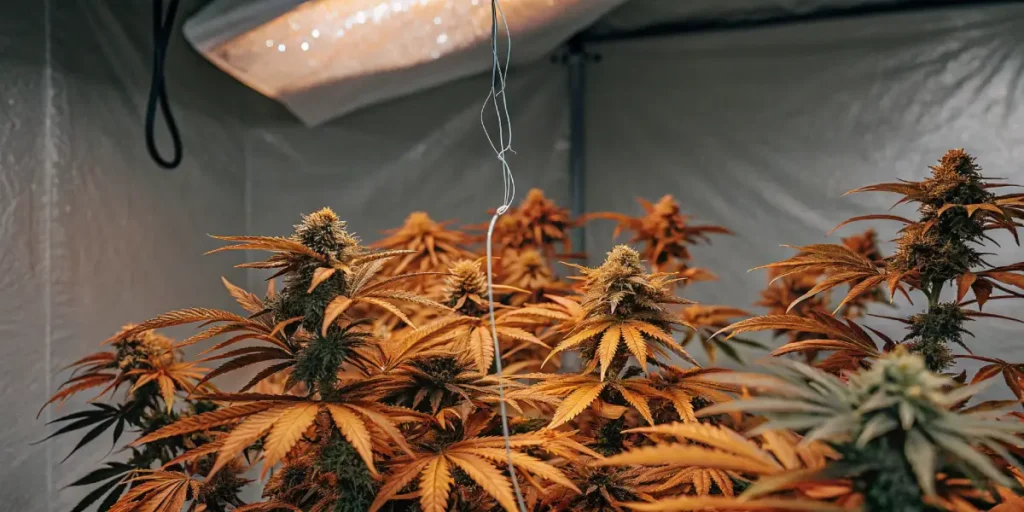
Maintain Optimal Growing Conditions
Lighting: Ensure a consistent light schedule with no interruptions during the dark period. Proper lighting is crucial for maintaining hormonal balance in your plants.
Temperature and Humidity: Keep temperatures between 68°F and 77°F with 40-50% humidity during flowering. Fluctuations in temperature and humidity can stress your plants, so invest in tools to maintain a stable environment.
Airflow: Proper ventilation prevents heat and moisture buildup. Good airflow also reduces the risk of pests and diseases that can stress your plants.
Choose Stable Genetics
Some cannabis strains are more prone to hermaphroditism than others. Stick to reputable seed banks that offer stable genetics. Investing in high-quality seeds can significantly reduce the risk of hermies.
Avoid Over-Stressing Plants
Limit pruning during flowering. Over-pruning can shock your plants and increase the risk of hermaphroditism. Handle your plants gently to avoid physical damage, and ensure they receive consistent care.
Recommended Products for Hermie Prevention
If you’re serious about preventing hermaphroditism, investing in quality equipment and genetics is crucial. Here are some products to consider:
Lightproof Grow Tents: Prevent light leaks during the dark period. A good grow tent can help you control the light environment and prevent stress-induced hermaphroditism.
Precision pH Meters: Ensure proper nutrient uptake. Maintaining the correct pH levels in your growing medium is essential for healthy plant development.
Stable Seeds: Purchase from trusted sellers like [Your Store Name]. High-quality seeds are less likely to develop hermaphroditism, even under suboptimal conditions.
FAQs About Early Signs Of Hermie Plant
What Are the Early Signs of Male Plants?
Male plants develop pollen sacs without pistils. If you see sacs forming without white hairs, you’re likely dealing with a male plant. Identifying and removing male plants early can prevent them from pollinating your female plants.
Can You Save a Hermie Plant?
Yes, but it requires close monitoring and removal of male flowers. However, heavily affected plants may need to be discarded. Saving a hermie plant is a labor-intensive process, and success depends on catching the signs early.
Are Hermie Plants Always Caused by Stress?
Not always. While stress is the most common cause, some genetics are predisposed to hermaphroditism. Choosing stable genetics can help reduce the risk, but even high-quality plants can develop hermaphroditism if exposed to significant stress.


